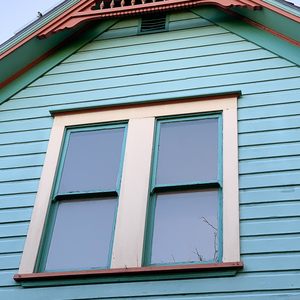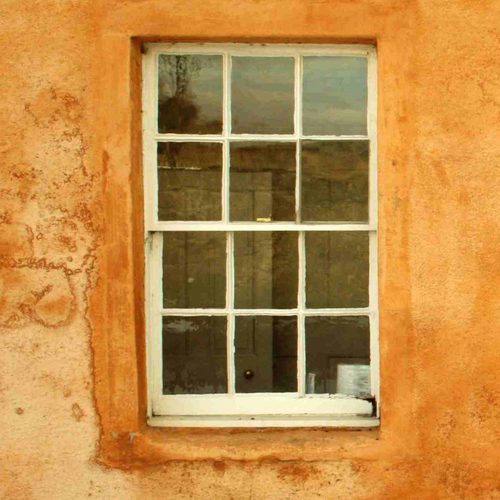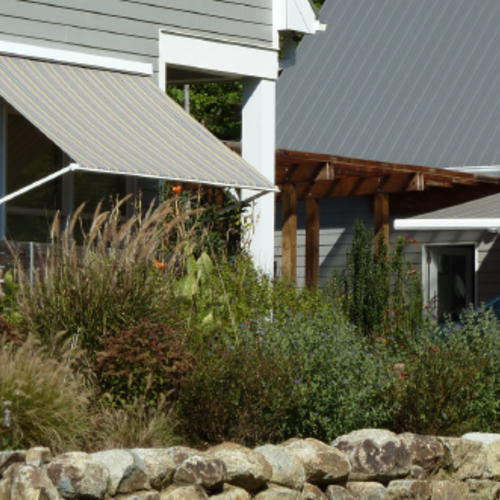
Image Credit: Fine Homebuilding
A client recently complained to me about how badly the old windows rattled in his historic home. He wanted to stop the noise as well as the air infiltration, but he didn’t want me to replace the windows. Like me, my client understands the important role that original windows play in preserving an older home’s historical integrity.
As a carpenter who specializes in restoration projects in New Orleans, I’ve come to appreciate not just the beauty of old windows but also their solid construction. All the sashes I see are made from locally milled cypress, a wood that has long been prized for its strength, its workability, and its rot-resistant qualities: ideal characteristics in this hot, wet climate. With the resources available today, boosting the efficiency of old sashes doesn’t mean tearing them out or painting them shut. You can have smooth-working windows original to the house that don’t rattle in the wind or make you dread next month’s energy bill.
Old sashes work better
Most people who want to address the issue of leaky windows tend to have a knee-jerk reaction: Either install storm units over the existing window opening, or remove the old sashes in favor of replacement windows (new units that insert in the old jambs). While storm windows can be installed to look unobtrusive, they are a pain to operate. To me, the much-more-expensive method of installing replacement-window units also has disadvantages. For starters, many of them don’t come close to operating as effortlessly as old sashes hung with counterbalanced weights. Unlike the pulley-and-counterweight system, which has few working parts, replacement windows contain many pieces that can break down over time, resulting in operation that deteriorates with age.
As an alternative course,…
Weekly Newsletter
Get building science and energy efficiency advice, plus special offers, in your inbox.

This article is only available to GBA Prime Members
Sign up for a free trial and get instant access to this article as well as GBA’s complete library of premium articles and construction details.
Start Free TrialAlready a member? Log in















6 Comments
Great info, thanks
I hadn't heard of putting sash weights in pipes so that the pocket can be air sealed. And the staple-on approach for plastic seals sounds sensible; apparently the adhesive v-strip products don't last very long: http://www.taitem.com/research/v-strip-article/
In situations where there are no sash weights or where the client is willing to forgo them, I've had success with a brass profile that nails into the jamb channels and fits into a groove routed into the stile of the sash. This allows the sash to ride up and down in a metal channel that seals air leaks and avoids the problem of paint-on-paint sliding surfaces. There's one with a return flange that covers the parting bead. (Made by Dorbin Metal Strip Mfg. Co., available from them in quantity or at Killian hardware. (http://www.kilianhardware.com/jamweatretfl.html)
I'd be curious how much a typical window rehab like this costs? No mention here of the issue of lead paint. All of the old windows I see are covered in it, and I've found that the care required to properly deal with that hazard makes this kind of work expensive and troublesome.
Great stuff.
This is an absolutely wonderful explanation of a problem I have been faced with often as past president of the Architectural Conservancy of Ontario, where people are looking for guides to fixing double hung windows. Is there any way GBA would consider bringing this out from behind the fence so that it could be circulated to the National Trust and other orgs that have to deal with this problem? It is one of the clearest articles I have read on the subject.
Response to Lloyd Alter
Lloyd,
I'm glad that you found the article to be useful. Right now, GBA has no plans -- indeed, no mechanism -- to move this article from its current location behind the paywall to a new location in front of the paywall.
A few suggestions:
1. The article is also posted on the Fine Homebuilding site, so anyone who subscribes to that web site can view the article there:
http://www.finehomebuilding.com/how-to/articles/renovating-historical-double-hung-windows.aspx
2. The article appeared in issue #192 of Fine Homebuilding. You can buy this back issue for $4. Here is the link:
http://www.tauntonstore.com/fine-homebuilding-magazine-issues.html
Another useful product for sash pulley treatment
The Anderson pulley seals can make a measurable difference in the infiltration without resorting to removing & replacing fragile window casings. It does reduce how high the sash can be lifted, but it's rare that you would actually NEED the last 2-4" of window opening. It reduces the cross sectional of the pulley air leak from about 1.5-2 square inches per sash, to less than 0.25 square inches.
They only come in brown or white, but could be painted to match if absolutely necessary.
http://www.andersonpulleyseal.com/
Due to lead laws in RI I am required to use jamb liners and a sill pan. Are there any product, best practices recommendations?
Thank you
axb18,
RI's requirements aside, every window should have a sill-pan.
You may find this article useful: https://www.greenbuildingadvisor.com/article/managing-water-at-the-windowsill
And this video: https://www.youtube.com/watch?v=JhXx__AMzTo
Log in or become a member to post a comment.
Sign up Log in